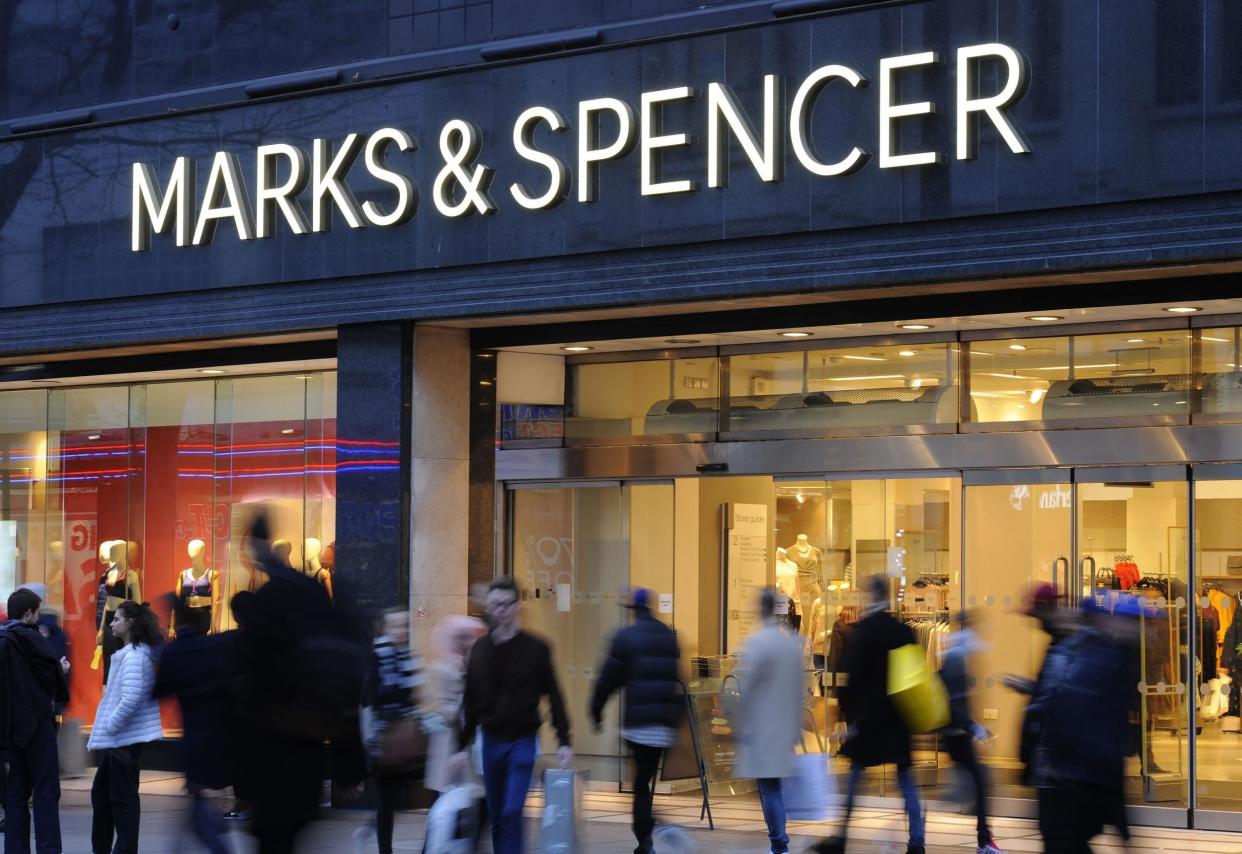Here's how Marks can get back its spark

You can never go far wrong by stating the obvious. Marks & Spencer’s chief executive Steve Rowe has responded to a drop of 62 per cent in profits last year by declaring that the company needs to provide a “better experience” for customers in “better stores” in order to reverse its downturn. Quite so, can’t say fairer than that.
But shedding 100 stores by 2022? Closing the ones in Holloway and Bayswater? That’s going to change the face of the high street. There’s talk too of M&S falling off the FTSE 100… that would have been unimaginable once — it was one of the founder members of the club.
First off though, the good side. There is no other retail institution, not even John Lewis, which can rouse interest, not to say passion, like M&S. When Mothercare or ToysRUs announced store closures, it was obviously grim for the employees, but the entire nation was unmoved. When Marks & Spencer announced its closure programme, it was the one thing people wanted to talk about.
There is no other retailer which is a national institution to the same extent. My brainy young colleague was appalled at the loss of the Holloway branch; in Clacton a rather different demographic will be asking where they are to buy their knickers.
The move to close store, interestingly, was taken after the company’s research found many customers shop at alternative branches rather than abandoning the brand when their store shuts: in other words, if you can’t get your M&S sausage roll, you find another branch, not another sausage roll. That’s remarkable.
The unique thing about M&S is that it is for all the people. There is nowhere else where you can buy for your granny and your new baby and which caters for gourmets and the cost-conscious. It is comprehensive to an extent that no other store is — no other retailer covers the basics in both food and clothes.
My mother can’t manage fiddly buttons any more, so I get her elasticated trousers there. I buy the recycled polyester T-shirts and the single-estate chocolate (swank, swank), for a very reasonable two quid. My children like the chocolate chip brioches. But we’re spoiled: my go-to branch is in Kensington, which is pretty well the crème de la crème of outlets.

My colleague in Holloway has, however, put her finger on some of the problems the store is facing. It’s in a shopping centre with Waitrose on one side and Morrisons and Iceland down the way. Tricky. And she discerned that the quality has gone down on the food front: there’s no classy chocolate mousse, she tells me plaintively.
But the first lesson in retail as in politics is: when they go low, you go high. You can never hope to beat Morrisons et al on price — though may I say that M&S basics such as eggs, pasta and milk are very reasonable — but you can beat them with the coquilles St Jacques and the liquid salted caramels. If you’re offering simple white T-shirts, you don’t want to match Asda but you do want to beat The White Company at its own game at about half the price.
The other problem is the stark, obvious, contemporary one — trying to match the competition online: M&S wants a third of sales to come from online purchases.
There the company has ’fessed up. Rowe admits that its website is too slow: “Our product pages need to download quicker if they are to be the best in class and our search needs to be made easier.” The company’s distribution centre for online orders in Castle Donington, opened to great fanfare in 2014, isn’t doing the job quickly enough and struggles to meet demand at peak times. Last Christmas M&S had to remove 3,000 products from its website because the centre couldn’t cope. That’s right. People wanted to buy things from M&S but they couldn’t. Go figure.
“That,” admits Rowe, “is not good enough when customers want more merchandise delivered quicker.” The website needs improving. All I’d say is, go to the John Lewis online operation and copy it.
Every woman I know has views about the womenswear section, where Rowe says it has gained customers for the first time in seven years. The retail analyst at TCC Global, Bryan Roberts, reflects general sentiment when he observes: “The business still lacks any sense of identity… M&S used to be famous as a destination for certain products, such as good-quality school uniforms, but that’s been lost somewhere along the way. A back-to basics approach should help it reclaim ground.”

That’s true. Quality basics are the essence of the brand, which isn’t to say there isn’t scope for interesting designer contributions. For instance, it’s hard to get good plain cardigans in M&S, with the exception of some of its very good cashmere section. Most are shapeless, too long and badly fitted. You don’t want weird colours; you want the equivalent of Jigsaw or Brora in terms of fit and simplicity in concept. But quality simple products are the very hardest thing to pull off.
A multiplicity of products is not a substitute for getting the essentials right. When it comes to teenage clothes, it is, for instance, quite hard to find slippers; the racks are crammed but not with good basics. But when M&S gets it right it really does things well: classic boys’ buttoned pyjamas for instance, are extraordinarily difficult to find but last year it had a selection of them, in cotton, with no gimmicks, for under 20 quid. Terrific. Is it that hard to pull off that trick in other areas?
In womenswear, I count about four different sub-brands including the excellent Autograph range and the younger Per Una clothes. But honestly, a multiplicity of brands within brands just gets confusing. And as for the Alexa Chung-curated collections, the clothes never quite seemed to fit with the rest of the brand, or appeal to women who haven’t a clue who she is.
This isn’t to say that cutting-edge design doesn’t work — I refer you to that fabulous pink, generously cut wool coat which half London was wearing a few winters ago — but it’s better when it’s anonymous. Once M&S was famous for imitating designer clothes — there was a celebrated rip-off of a Helmut Lang camel coat once — but they were quality.
Ethical shopping is where younger people are at and M&S are one of the few companies to which you can, up to a point, subcontract your conscience on factory conditions and animal welfare. Make more of it.
Then there are other areas like recycled and environmentally friendly materials: recycled polyester and linen, which it could brag about.
“The genesis of any turnaround starts with the recognition of the unvarnished truth,” says its chairman, the great Archie Norman.
Well, M&S doesn’t need to despair, just needs get a grip. When all’s said and done, where else are we to get our knickers?

 Yahoo News
Yahoo News 
